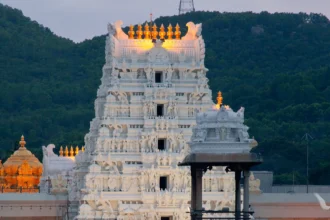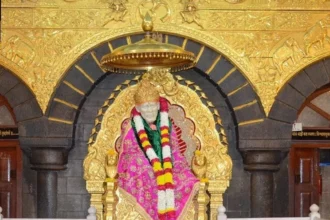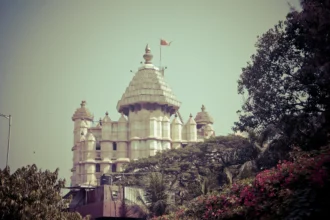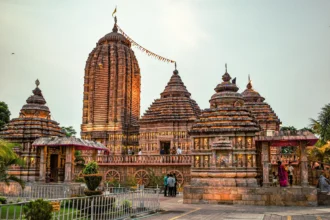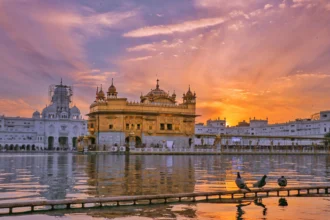The origin story of Lord Jagannath and His siblings—Balabhadra and Subhadra—is one of the most mysterious, mystical, and soul-stirring legends in Indian spiritual lore. It’s a divine tale where God becomes form without form, where a carpenter is no ordinary man, and where incompletion is perfection.
Let’s dive into the creation stories of Jagannath deities—both mythical and spiritual versions, including rare tales that most people don’t hear outside ancient texts and temple circles.
1. The Heart That Would Not Burn: Krishna’s Heart Became Jagannath
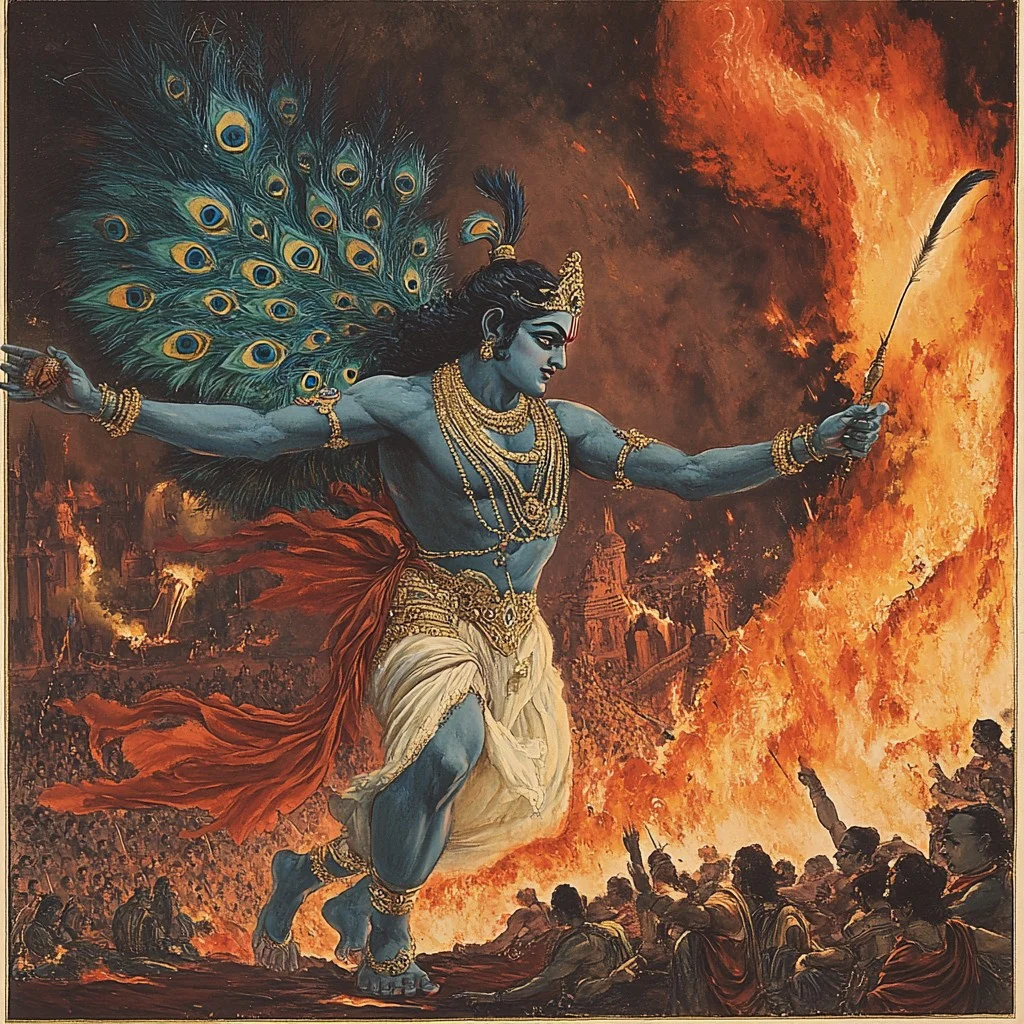
One of the most profound and hidden origin stories connects Jagannath to Lord Krishna’s final moments on Earth.
After Krishna was shot in the foot by Jara the hunter and cremated by Arjuna, his entire body turned to ash—except his heart, which refused to burn. It glowed with a strange light and pulsed with life.
This heart, some say, floated eastward, carried by ocean waves, glowing and indestructible.
Centuries later, this very heart became enshrined inside the wooden idol of Jagannath, during the mysterious ritual of Brahma Padartha transfer.
So when you stand before Jagannath in Puri, you’re not just looking at a form of Vishnu—you’re standing before the living heart of Krishna Himself, the only part of His earthly form that remains eternal.
2. The Most Famous Legend: Vishwakarma the Carpenter & King Indradyumna
Centuries ago, in Satya Yuga, there lived a devout king named Indradyumna, a ruler of Malwa (some say Odisha). His life’s mission was to build a temple for Lord Vishnu in His most unique form. One night, he had a dream: a divine log, shaped not by man but by the gods themselves, would float ashore at Puri. That log, or Daru Brahma, would house the soul of the Lord.
He sent his men across the coastline to search. Days later, a glowing, fragrant log of neem wood, untouched by rot or insects, was found floating near the seashore at Puri. But no one could lift it—until King Indradyumna prayed, fasted, and surrendered to the Lord. Then the log lifted effortlessly.
But who would carve the deities?
Then appeared a mysterious old carpenter—some say Lord Vishwakarma himself, the divine architect of the gods. He made one condition:
“You must not open the door for 21 days. If you do, I will vanish, and the idols will remain incomplete forever.”
Indradyumna agreed. But as days passed, the queen, Gundicha, grew anxious. Inside the chamber, there was no sound—no hammer, no carving, no movement. It felt like the carpenter had either abandoned the work or died.
On the 15th day, unable to bear the silence, she begged the king to open the door. He finally did—and as the door creaked open, the carpenter vanished into thin air. What lay behind were three beautiful but incomplete idols, carved from the sacred neem log, without hands and with large circular eyes.
The king fell to his knees in despair. But then a divine voice echoed through the temple:
“These are My chosen forms. Though incomplete to your eyes, they are complete in My divinity.”
Thus, the form of Jagannath—the Lord of the Universe—was born. His arms were absent, but His embrace would now include all.
Many believe That Carpenter Was Not Just Vishwakarma—He Was Time Itself
In some rare versions of the story, the carpenter who builds the idols isn’t simply Vishwakarma, the celestial architect. He is called “Ananta Rupa”—a form of Kaal (Time). He enters the story not just to build, but to test humanity’s impatience.
One version says:
“The idols can only be completed in the heart of those who wait in full faith.”
Because the king opened the door early, he failed the test of Time. That’s why the deities are unfinished—because humanity wasn’t ready to see God’s full form.
This version adds a profound layer: what we call “incomplete” is actually the result of human ego trying to rush the divine.
3. The Daru Brahma: The Sacred Soul Inside the Idol
The most powerful and secretive aspect of Jagannath is His inner essence, known as Brahma Padartha or Daru Brahma.
- This tiny, divine core is believed to have been passed down from one idol to the next for millennia.
- It is not touched, seen, or spoken of by any mortal. During the sacred ritual of Nabakalebara (every 12–19 years), this soul is transferred from the old idol to the new one, under complete secrecy.
- The priests who perform the ritual are blindfolded, wrapped in silk, and required to fast and pray for weeks before they even approach it.
- Legends say anyone who sees it with human eyes dies instantly or becomes spiritually overwhelmed.
Some say the soul is a blue crystal. Others say it’s a living light. But no one really knows—because it is said to be the original divine energy left by Lord Krishna before His departure from the world.
4. Jagannath Appeared as Nilamadhava Before Becoming Wood
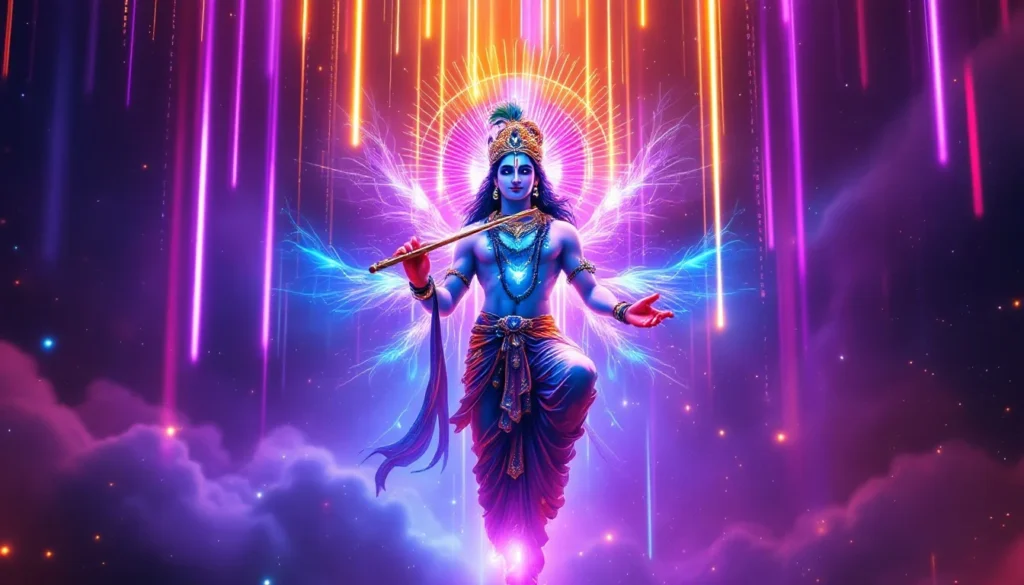
Before becoming the wooden deity known today, Lord Jagannath was worshipped as a radiant blue stone idol called “Nilamadhava”, deep in a forest cave near the Mahanadi river.
This form of Vishnu was worshipped secretly by the tribal king Vishwabasu. According to ancient texts, the idol was self-manifested (Swayambhu) and gave off a bluish glow, illuminating the dark cave.
When King Indradyumna sent his priest Vidyapati to find Nilamadhava, Vishwabasu initially hid the location. But eventually, Vidyapati married Vishwabasu’s daughter, Lalita, and she guided him.
However, by the time the king arrived to see Nilamadhava, it had vanished—into thin air. Later, Lord Jagannath came in a dream and said:
“I will return—not as stone, but as wood. Carve Me from the sacred Daru on the shore.”
Thus, Jagannath’s form evolved from stone (Nilamadhava) to wood (Daru Brahma), symbolizing divine impermanence and rebirth.
5. Jagannath Was Originally Worshipped by a Tribal Woman
One of the lesser-heard versions of the origin story reveals that Jagannath’s earliest form was worshipped by a tribal woman, known in folklore as Savitri or Vishwabasu’s daughter. This story doesn’t begin with a king or a palace, but with a humble forest-dweller and her unshakable devotion.
Legend says she discovered a mysterious glowing log of wood in the forest, from which came a divine aura. Every night, she would cook simple meals and offer them lovingly to the log, and in return, she would feel warmth and joy in her heart.
One day, when she came late, she found her food already eaten—bite marks on the banana leaves. This wasn’t hallucination. It was the Lord Himself accepting love in its purest form, before temples or rituals were even born.
This story suggests that Jagannath’s first devotee was not a king, priest, or sage—but a woman of the forest, proving that true devotion lies in love, not knowledge or status.
6. Why Are the Forms Incomplete?
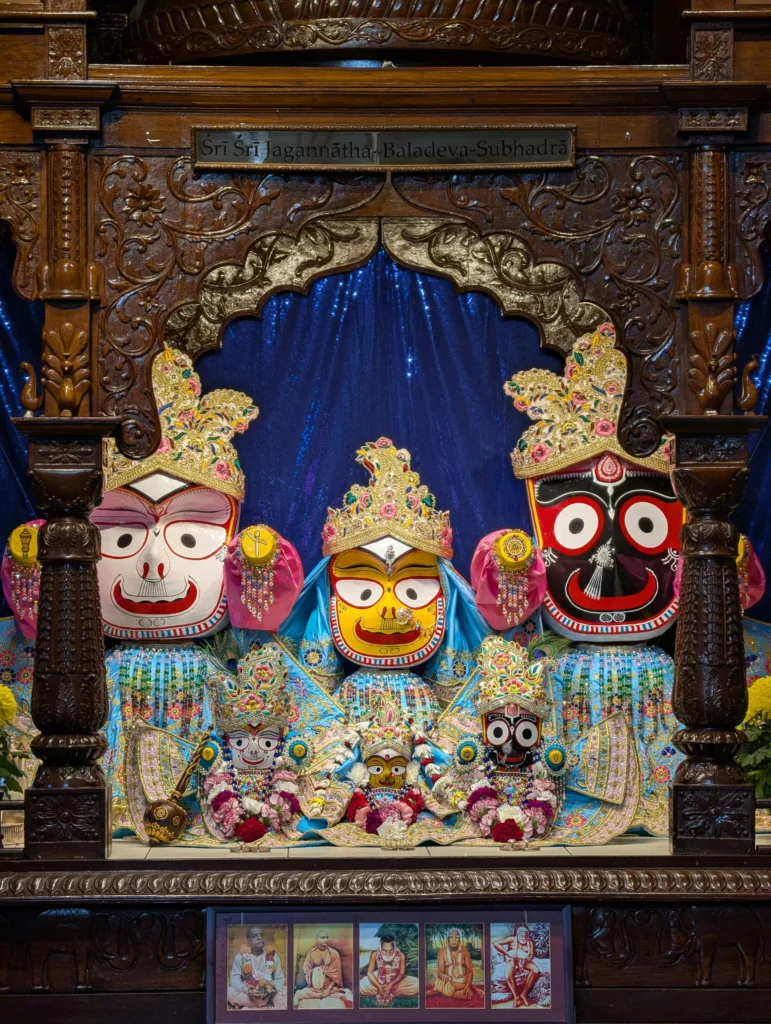
Unlike typical Hindu idols, Jagannath, Balabhadra, and Subhadra do not have fully formed limbs. There are many layers of meaning behind this:
- Symbol of the Universal Form: The round eyes represent the omnipresence of the divine. No hands or feet are needed to protect, love, and accept His devotees.
- Metaphor for Unfinished Humanity: Jagannath’s form reminds us that we are all a work-in-progress—and so is God, in His compassionate acceptance of our flaws.
- Love over Aesthetics: Where most gods are shown in perfect form, Jagannath chooses incompleteness, showing that it is not form, but faith, that matters.
7. The Queen Who Fed Jagannath Before He Had a Name
Another forgotten story from temple lore tells of Queen Gundicha, wife of King Indradyumna. While the deities were being carved inside a sealed room, she was restless and began cooking food and leaving it outside the door for the carpenter.
But the food was untouched.
On the 14th night, unable to bear the silence and worried that the carpenter had died, she knocked gently—and she heard a faint whisper: “I am eating through your faith.”
The next morning, when the king opened the door (breaking the vow), the idols were incomplete—but infused with divine life.
The Queen’s food was the first “Mahaprasad”, and she is still honored during the Rath Yatra, as the Gundicha Temple is where Jagannath rests for a few days. Her kitchen is said to have laid the foundation for Rosaghara, the largest kitchen in the world today.
8. Lord Jagannath Once Became an Elephant to Protect a Devotee
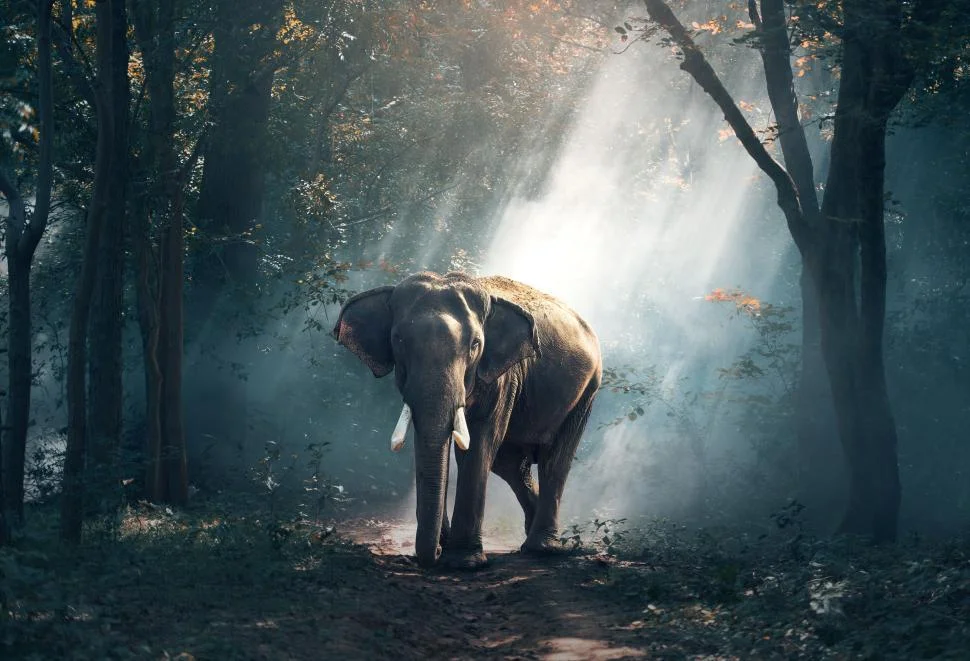
An old Odia folk tale tells the story of a poor elephant herder named Hari, who used to feed a small part of his lunch every day to a wooden log in the jungle that he believed was God.
One day, wild animals attacked Hari in the forest. As he called out for help, a divine white elephant with giant round eyes appeared, scattering the animals and saving him.
Later, in a dream, Jagannath appeared and said,
“That log you fed was Me. I became the elephant to protect My devotee.”
This story is significant because it’s one of the few times Lord Jagannath takes the form of an animal, breaking traditional norms and affirming that He will take any form to save His bhaktas.
9.Why 3 Deities, Not Just One?
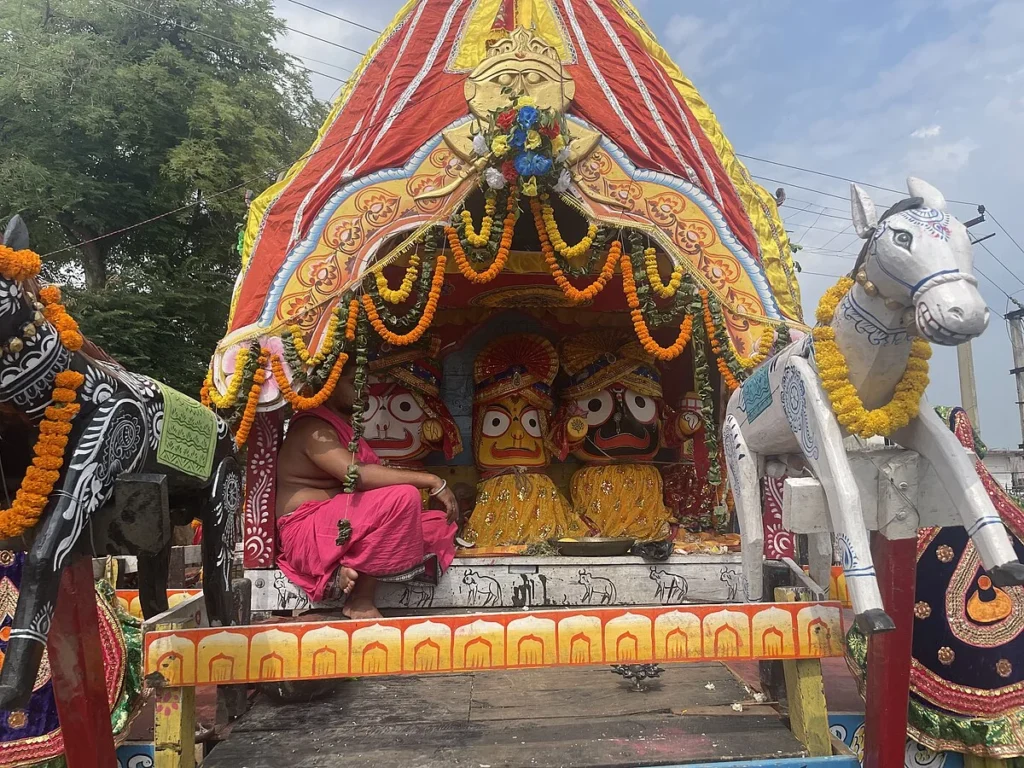
Another unique feature of Jagannath Temple is the three deities on the same altar: Jagannath, His elder brother Balabhadra, and His sister Subhadra.
This trio reflects family love, a rare theme in Hindu temples where deities are usually shown with consorts. Here:
- Balabhadra represents strength and righteousness.
- Subhadra represents compassion and femininity.
- Jagannath (Krishna) is the divine center of love and devotion.
Some scholars believe this trio symbolizes inclusive harmony—the masculine, feminine, and universal consciousness, all worshipped as one.
Final Thoughts: What the Creation of Jagannath Truly Means
The story of Jagannath’s creation is not just about wood and tools. It’s about unseen hands carving divine presence, a test of human patience, and the humility of a king who accepted an unfinished God.
Where the world values symmetry and perfection, Jagannath teaches us that:
- Even the incomplete is divinely complete.
- God is not far away, but deeply human.
- What you don’t see is just as sacred as what you do.
Every crack in the wood, every missing arm, and every round eye is a message:
You are loved not despite your flaws, but through them.
Jagannath’s form was never just carved. It was born of faith.
His origin is not a single event but a weaving of countless threads of love, mystery, and surrender, reminding us that the Divine chooses where to dwell—not in palaces, but in the pure hearts of those who believe.



